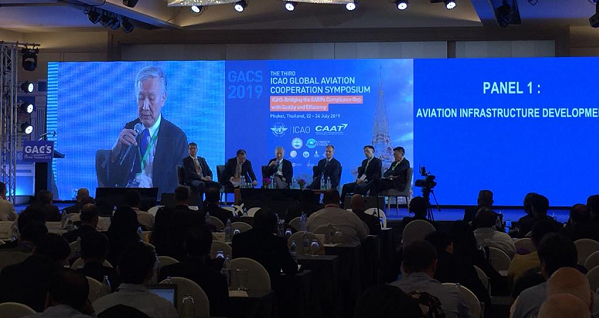Investing in the future of the ATM industry

Hai Eng Chiang, CANSO Asia Pacific Affairs Director, makes the case for collaborating on capacity building and implementing best practice in ATM.
Making the case for investing in aviation is a challenge the industry shares. But as demand for more modernised infrastructure and enhanced operations increases, how is the ATM industry keeping pace?
CANSO takes an active role in promoting investment in ATM and securing the efficiency and effectiveness of ATM operations worldwide both now and in the future. This includes collaborating with industry partners and stakeholders to address key challenges and identify opportunities.
Last month, CANSO took part in the 3rd ICAO Global Aviation Cooperation Symposium was held in Phuket, Thailand, in July 2019. It is a technical cooperation forum that brings together regulators, operators, service providers and other stakeholder to exchange views and discuss challenges and opportunities in their respective fields.
I was a speaker in the first panel on Aviation Infrastructure Development to discuss how best to plan and implement aviation infrastructure solutions to meet the growth of air traffic. Moderated by the Director General of CAAS Mr Kevin Shum, the panel comprised speakers from CANSO, ACI, EUROCONTROL, AEROTHAI and Airports of Thailand.
Making the case for ATM
It was a very good opportunity to impress upon the global audience the importance of ATM. From a funding viewpoint, the challenge in ATM capacity building is magnified because it is largely invisible to the public and decision makers. In contrast, the infrastructure and assets of airports and airlines are highly visible.
Many developing ANSPs have difficulty acquiring funding to modernise ATM because as State entities they are subject to government budgets and their many competing needs. It is therefore vital that the importance of ATM infrastructure investment is promoted and given the prominence it deserves, not only to transport ministries but also to those that reap the economic benefits of aviation such as finance, trade and tourism.
There is also the question of what, when and how to invest. Today, the blueprint for ATM development cascades down from the global and regional level to the national level. At the global level, the technology requirements are spelt out in the Global Air Navigation Plan (GANP) which is used as the basis for regional and national plans.
Partnering for success
The how is where the real challenge lies but this is also where CANSO is in a unique position to assist as our membership comprises both the buyers and sellers of ATM infrastructure and technology.
With rapid technological transformation, there is no lack of solutions to help ANSPs overcome the capacity crunch. Some game changers like space-based ADS-B as well as remote or smart towers are already in operation. Information exchange between aircraft, ATC and airports is also being transformed with the transition to system-wide information management (SWIM), while AI and machine learning are propelling the development of decision support tools.
However, ATM capacity building is more than just infrastructure and technology. CANSO provides important platforms for the sharing of information that has led to the publication of best practice guides on key ATM building blocks in the GANP such as ATFM, A-CDM and PBN. There is even a best practice guide on ATM procurement called the CANSO Acquisition Excellence Manual.
International civil aviation is trans-boundary in nature and therefore the ATM system that supports it must transcend national and airspace boundaries. Our regional workgroups bring together ANSPs to collaborate on cross-border projects while regional workshops help with the transfer of knowledge and experiences.
Finally, the human dimension cannot be underestimated in aviation infrastructure development because it is ultimately people who would manage, maintain and operate our systems. As ATM systems become more complex, the issue of training and human performance must be key considerations at the outset. CANSO has developed a Standard of Excellence in Human Performance Management and so far 10 ANSPs worldwide are implementing the tools and guidance it offers.
CANSO will continue to work with ICAO and other industry bodies to secure resources and expertise and improve the performance of ATM globally. To find out more about how CANSO works with industry stakeholders, read the latest news and blogs, follow us on social media or get in touch.




